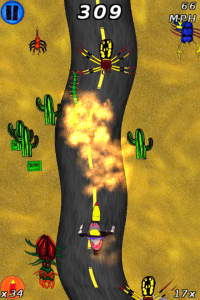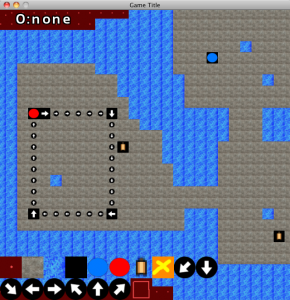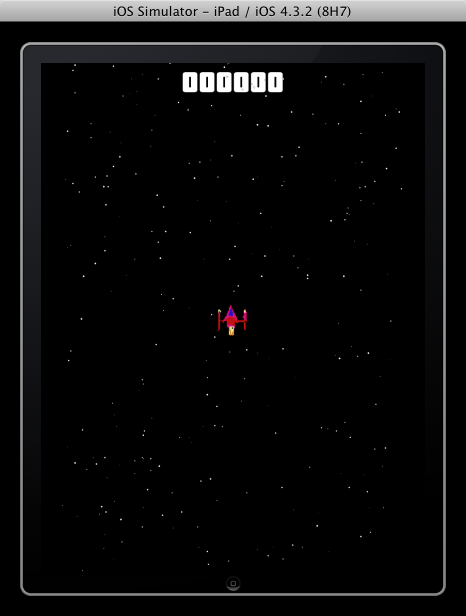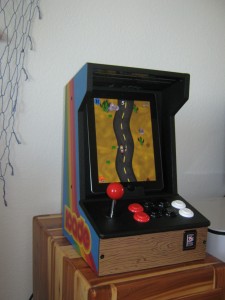The 2011 Re-Cap: Five games in one year!
January 6th, 2012Ahoy there! 2011 was a great year! Here’s a re-cap of the games I released and some final thoughts on ’em!
First of was The Invasion of the Blobs which was my Ludum Dare #20 entry! I had a blast making this game as part of the jam. I used this game as a way to work on my ports to Android, iOS, PC, Mac, Linux and distributed the game on all of them. I however, had to pull the Android version after a few hours because it was having so many technical problems. This caused me to decide to put further Android dev on hold for 18 months, until the platform has matured enough for me to be able to easily port things to it without going totally crazy. I’ll probably use Marmalade for future ports to Android. iBLOBS got around 25k downloads between the Mac and iOS app stores.
Next up was The Exterminator which was a game I made along with several teens to raise money to build a community outreach center. This project was a total blast, we spent two days working together on it, and then I spent a few more days spit shining the menus and adding in basic Game Center support. The release got a bit of coverage on 148Apps but no other iOS press that I know of. However, it did get some great local coverage in Colorado! This was pretty great, because, really, the game sold only a couple hundred copies, barely enough to cover the iOS dev fees. But it help raise awareness in Colorado and got at least one sizable non-profit interested in contributing a significant amount of money to the project (this is still in their approval process, so we don’t know for sure if that will come through or not.) Whatever the case was, it was a fun project, and it was a great excuse for me to buy an iCade 😉
And then there was Chickon which was most definitely the most silly project I went into this year. I intended for this project to take a couple of weeks but it ended up taking about 6 months .. but I’d hardly call it really hard-serious work type 6 months. In the end, Chickon was an amazing PR success. touchArcade gave it 3 or 4 articles featuring all the goofy stunt videos I produced and reviewed it. The game has not seen a ton of in-app-purchases, but people who have played it have enjoyed it. I think this project was something of a success just for keeping my name in the ear of the press. At least they know I still exist! And I’m still doing something! I also tried a ton of different Galcon gameplay features in this game to see what worked and what didn’t. Since I am thinking about doing another Galcon sequel in the future, this game helped me eliminated about half a dozen really bad ideas 🙂
And then I worked on my new game Anathema Mines. The beta mentioned above was a very limited private beta, though I may expand it more in the future. This game’s is explained a bit more here where I go into how it’s kind of the 4th rebirth of a game concept I’ve been working on for about six years now. I’m really happy with how it’s coming together and the next 2-3 months are going to be dedicated to finishing this game and giving it the best launch possible!
Lastly, I wrapped up the year having a blast creating Nobody Wants Kitty for Ludum Dare #22. The game is about a cat who nobody loves because it’s so ugly. The cat has to upgrade to being pretty over the course of the game. I had a fun time making this and I got to learn a bit more about creating flash games, which is really one of the best ways to prototype anything now-a-days!
Anyway, it’s been a great year! Thanks a ton for playing my games!
-Phil


















